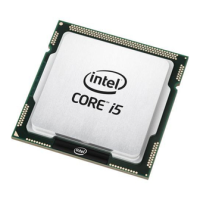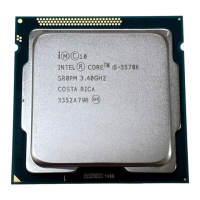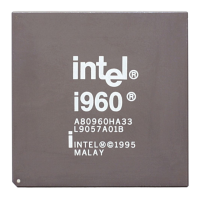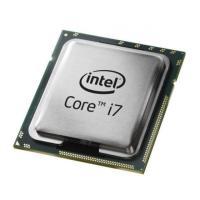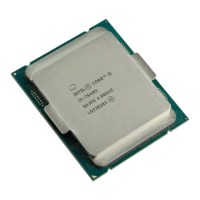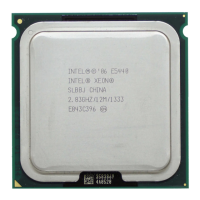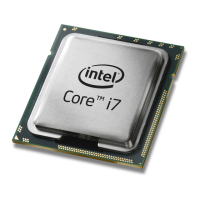25
Specification Update
AAU27. Disabling Thermal Monitor While Processor is Hot, Then Re-enabling,
May Result in Stuck Core Operating Ratio
Problem: If a processor is at its TCC (Thermal Control Circuit) activation temperature and then
Thermal Monitor is disabled by a write to IA32_MISC_ENABLES MSR (1A0H) bit [3], a
subsequent re-enable of Thermal Monitor will result in an artificial ceiling on the
maximum core P-state. The ceiling is based on the core frequency at the time of
Thermal Monitor disable. This condition will only correct itself once the processor
reaches its TCC activation temperature again.
Implication: Since Intel requires that Thermal Monitor be enabled in order to be operating within
specification, this erratum should never be seen during normal operation.
Workaround: Software should not disable Thermal Monitor during processor operation.
Status: For the steppings affected, see the Summary Tables of Changes.
AAU28. Writing the Local Vector Table (LVT) when an Interrupt is Pending
May Cause an Unexpected Interrupt
Problem: If a local interrupt is pending when the LVT entry is written, an interrupt may be taken
on the new interrupt vector even if the mask bit is set.
Implication: An interrupt may immediately be generated with the new vector when a LVT entry is
written, even if the new LVT entry has the mask bit set. If there is no Interrupt Service
Routine (ISR) set up for that vector the system will GP fault. If the ISR does not do an
End of Interrupt (EOI) the bit for the vector will be left set in the in-service register and
mask all interrupts at the same or lower priority.
Workaround: Any vector programmed into an LVT entry must have an ISR associated with it, even if
that vector was programmed as masked. This ISR routine must do an EOI to clear any
unexpected interrupts that may occur. The ISR associated with the spurious vector
does not generate an EOI, therefore the spurious vector should not be used when
writing the LVT.
Status: For the steppings affected, see the Summary Tables of Changes.
AAU29. xAPIC Timer May Decrement Too Quickly Following an Automatic
Reload While in Periodic Mode
Problem: When the xAPIC Timer is automatically reloaded by counting down to zero in periodic
mode, the xAPIC Timer may slip in its synchronization with the external clock. The
xAPIC timer may be shortened by up to one xAPIC timer tick.
Implication: When the xAPIC Timer is automatically reloaded by counting down to zero in periodic
mode, the xAPIC Timer may slip in its synchronization with the external clock. The
xAPIC timer may be shortened by up to one xAPIC timer tick.
Workaround: None identified.
Status: For the steppings affected, see the Summary Tables of Changes.
